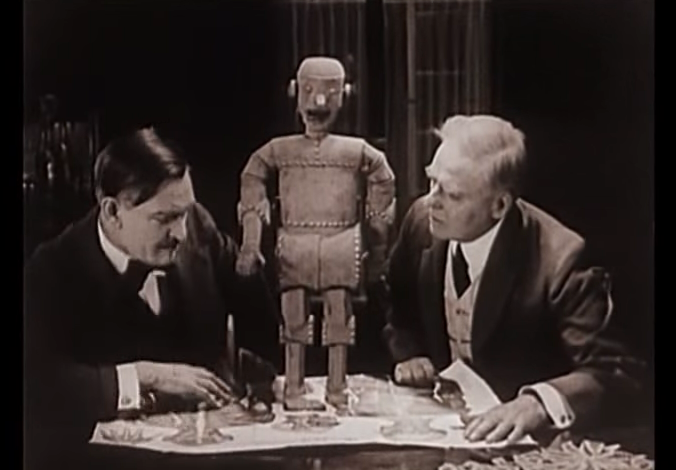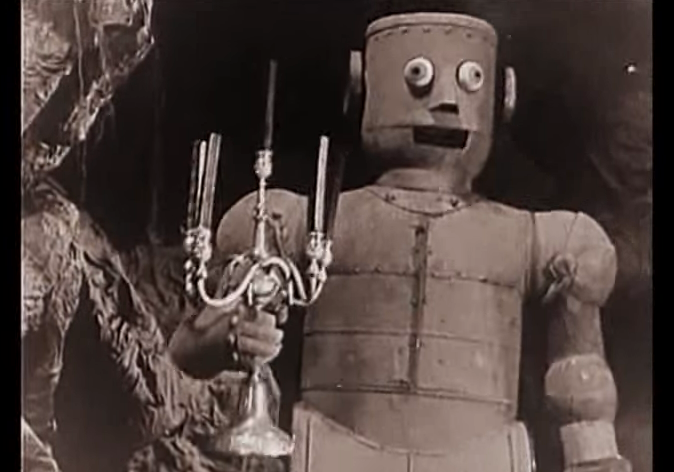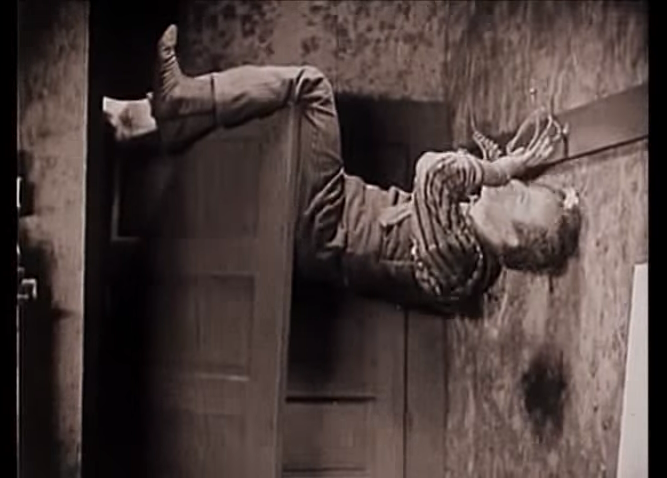-
#349 – The Master Mystery (1918)
The Master Mystery (1918)
Film review #349
Directors: Harry Grossman, Burton L. King
SYNOPSIS: Balcom and Brent run International Patents inc., a shady company that buys the patents for people’s inventions and prevents them from ever being released to the public, thus protecting their benefactors. Brent has a change of heart and wants to make amends, but Balcom is having none of it. When the adventurer Flint returns home, he meets with Brent, but the meeting ends up with them contracting “Madagascar madness”, a disease that leaves them laughing until they end up comatose. Quentin Locke, a man employed by Brent, is accused by Balcom of having infected them, and seeks to have him arrested. To make things even more problematic, an iron automaton begins wreaking havoc in the house, and so Quentin must unravel the mystery and prove his innocence before it is too late…
THOUGHTS/ANALYSIS: The Master Mystery is a 1918 silent movie serial originally composed of fifteen parts. One of the big draws of this serial is that it stars famous escapologist Harry Houdini, and his name is all over the credits in order to draw people in to see the serial. The story centres around the International Patents inc. company, which allows inventors to establish their patents and distribute them. However, Balcom, the co-owner of the company, starts to withhold the patents from release in order for the company’s partners and investors to keep a competitive edge. This does not sit well with Brent, the other co-owner, and the two are at odds with one another when the film starts proper. Balcom is also trying to get Brent to marry his daughter Eva to his son Paul, and thus further tightening his grip on the company. However, Eva is in love with Quentin Locke, a member of the justice department. When Flint, an adventurer, returns from Madagascar, he and Brent are struck down with the Madagascar Madness: a disease which causes both of them to be in a state of ever-smiling stasis. Locke begins to suspect foul play, and begins investigating, which brings about the appearance of an iron automation, which terrorises the house from time to time. The film follows the standard serial format, with each episode providing a new scheme or cunning plan by the villains to trap and stop the heroes. The plot on the whole feels overly complex, with all these different characters having particular relations to each other. It’s good that the story actually has some substance, but there’s not a lot of variety or novelty in the various elements. The pacing of the story is also quite typical of serial films: each part consists of a new plan by Balcom or the automaton to get rid of Locke and others, usually in the form of a trap which ends on a cliffhanger.
At the end of most parts, Locke is captured and placed in a trap designed to kill him, and there’s a good mix of traps and devices that are used to give the film some variety. This is also where Locke, played by Harry Houdini, gets to shine, as they can film some of his famous escape acts, which would have been one of the main draws of the film. However it starts to make little sense, since if the aim is to kill Quentin, then why do they keep knocking him out and putting into these elaborate traps when they could just kill him, especially since he manages to escape from them every single time? In order for this to make sense the traps needed to have some kind of motivation for them, since they constantly avoid killing him in place of using these traps. However, this is obviously the film’s highlight, as the stunts are done without trickery or edits, and authentically place Houdini’s character in danger. The fight scenes also involve a few stunts of Quentin/Houdini swinging from chandeliers and the like, which would have been entertaining back in the days of limited special effects.
The character of the Automaton is typical in terms of serials in the sense that the main villain is hidden behind a mask and their identity is kept secret. However it’s pretty easy to work out who the automaton is if you pay attention, as by the tenth episode or two there’s only one character the automaton hasn’t interacted with in some capacity. The automaton is probably one of the first cinematic appearances of a robot-like character, the term ‘robot’ itself had not even been termed yet, as it originated in a 1920 play, in which it denoted an artificial humanoid and deriving from the Czech word ‘robota’, meaning ‘forced labour’. The automaton moves stiffly and mechanically, and acts like you would imagine, but it does look a bit silly, especially with the big, round, cartoon eyes. But I would say that it is a good accomplishment of its time, and the spectacle is weaved cleverly into the story, being one of the patents Balcom stole and developed.
The serial nature of the film does make a lot of the content repetitive. As mentioned, Quentin’s constant getting caught in traps and getting out can be overlooked because the traps are varied and Houdini performing them is one of the main draws of the film. Some of the other elements do get a bit stale, such as the character of Zita, who constantly leads Quentin and Eva into traps set by Balcom, and the two of them continuing to trust her as she does it again and again. Zita’s character is one of the more complex ones, as she is torn between working for Balcom and her love for Quentin which makes in some sense justifies her constant back-and-forth between being a help and a hindrance. The ending reveals a constant stream of revelations (aside from the automaton’s identity) that aren’t really raised as issues throughout the film, and so don’t really change the outcome of the film. The identity of Zita’s father forms a bit of the story, but the rest just feel like they were added to allow the viewer to feel that they got something out of watching all fifteen episodes. In short, the Master mystery was obviously made for one main reason: to show off Houdini’s escape acts on film. Everything else is a bit superfluous. The automaton would have been a pretty unique sight when the serial was released, but looks a bit silly nowadays, and the racist depiction of the “oriental” characters being shifty criminals worshipping dragons certainly doesn’t stand the test of time. The film does, however, have a coherent story with sufficient content (even if that content can get confusing), and does develop a decent narrative along the way as to avoid too much repetition, and allows the viewer to feel like that they are getting something out of watching it. It’s not as good as other similar serials (Judex, for example), but it has it’s moments, and is a good example of the early forms of the serial format.









